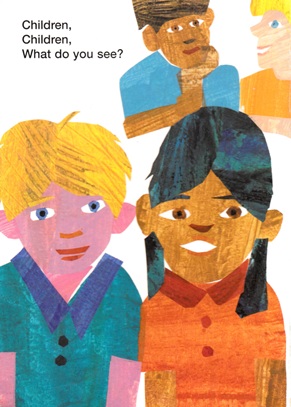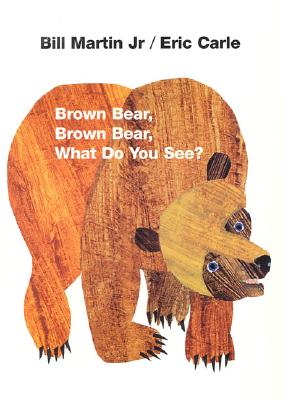In my last post about Bill Martin Jr. and Eric Carle‘s Brown Bear, Brown Bear, What Do You See?, I talked a lot about how reading the book aloud to my daughter became this shared meditative experience between the two of us. It’s a book that, to me, really comes alive when you read it out loud. I also mentioned that Gwyneth Paltrow had narrated an audio version of the book and debated whether the book could sound as powerful coming from a recording. Well, thanks to magic of YouTube, we can test that theory.
There are several different readings of Brown Bear, Brown Bear available on YouTube, so I picked THREE different versions and, dear readers, I’d like you to take a listen to all three and let me know what you think. Is there a version that particularly resonates with you? Do any of them fall completely flat? Would you actually play any of these for your kids? I’m interested to hear your feedback.
The first version is the author, Bill Martin Jr., reading the book himself. He definitely brings his own musical rhythm to the text, singing the lines like they were the lyrics of a children’s song from his youth.
The next reading of Brown Bear is the aforementioned Gwyneth Paltrow version. I’m including a video that has the highest-quality audio I could find, but, just a heads-up, it doesn’t follow along with the book. (There is a version that pairs Paltrow’s reading with a flip through the book – you can see it here – but the audio quality in that video is really bad, so I didn’t think it was fair to feature it.) Paltrow actually reads the book closer to how I read it. She takes her time, she doesn’t sing the words – I never read the book as a song – and she actually does voices for the animals. It’s an interesting take.
The third reading totally turns Brown Bear, Brown Bear into a song. In fact, it sings the entire book to the tune of “Twinkle, Twinkle, Little Star.” If I’m being honest, it would be an understatement to say that I @#$%ing hate this version.
Which one is your favorite? Or would you rather just stick with live readings?
{ 3 comments }

